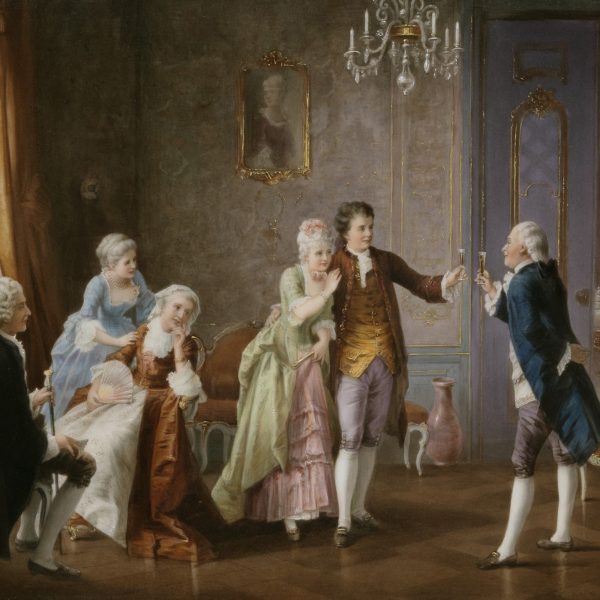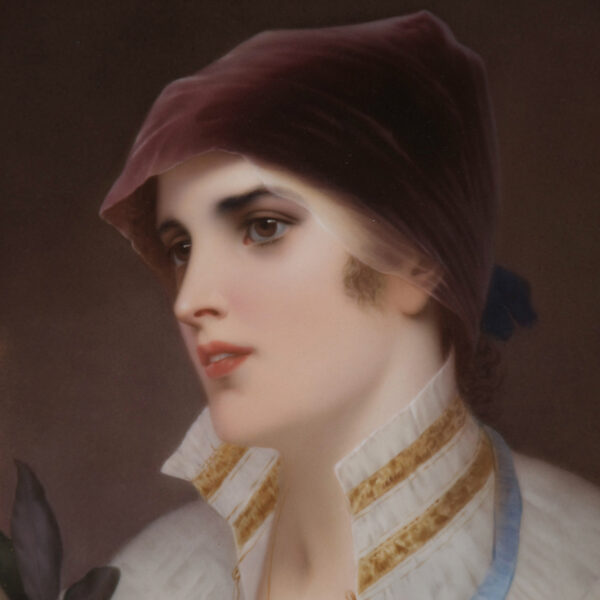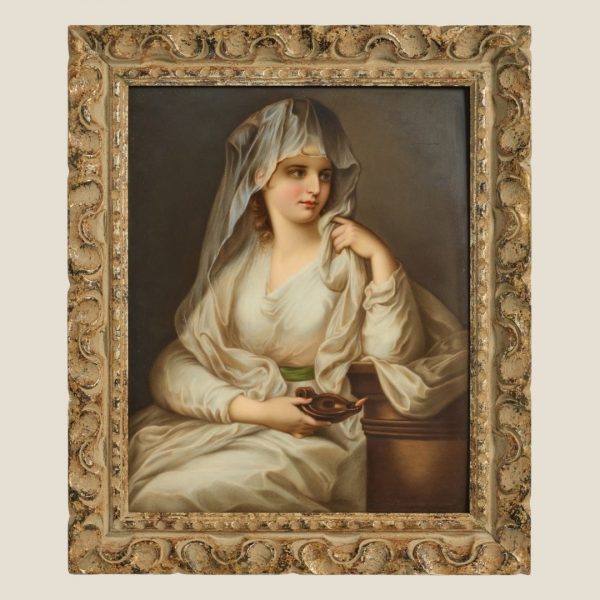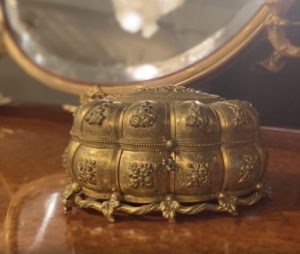Konigliche Porzellan-Manufaktur (KPM)
A Berlin K.P.M Porcelain Plaque Emblematic of Winter
£48,000
A Berlin K.P.M Porcelain Plaque Emblematic of Winter, Painted by Louis Scherf (1870-1955). The subject of this plaque represents Winter and is drawn...
Dimensions
Height: 50.7 cm (20 in)Width: 85 cm (34 in)
Description
A Berlin K.P.M Porcelain Plaque Emblematic of Winter, Painted by Louis Scherf (1870-1955).
The subject of this plaque represents Winter and is drawn from Norse mythology, depicting the death of the sun god in autumn/winter.
Impressed Sceptre and KPM mark. Signed in the lower left corner ‘Copiert nach Prof. H. Prell von L. Scherf’, the reverse inscribed in blue ‘Winter‘ nach Prof. H. Prell‘.
Approximate Dimensions:
34 x 67 cm. (13 x 26 inches), the plaque
51 x 85 cm .(20 x 33 1⁄2 inches), overall including frame
Germany, Circa 1900.
This plaque is a master class in the art of painting on porcelain. Flat pieces of porcelain of this size are very difficult to fire, often breaking in the kiln. The risk of the plaque breaking is multiplied with each subsequent firing for the underglaze, glaze, painting and overglaze. This risk is all the more given the exceptional quality of the painted decoration which is executed in the finest detail with enamel colours of vivid tone.
The subject of this plaque represents Winter and is drawn from Norse mythology, depicting the death of the sun god in autumn/winter. The composition is copied from a wall mural by the German artist artist Hermann Prell (1854-1922), which was painted for the throne room of the then Prussian Embassy in Rome, the Palazzo Caffarelli.
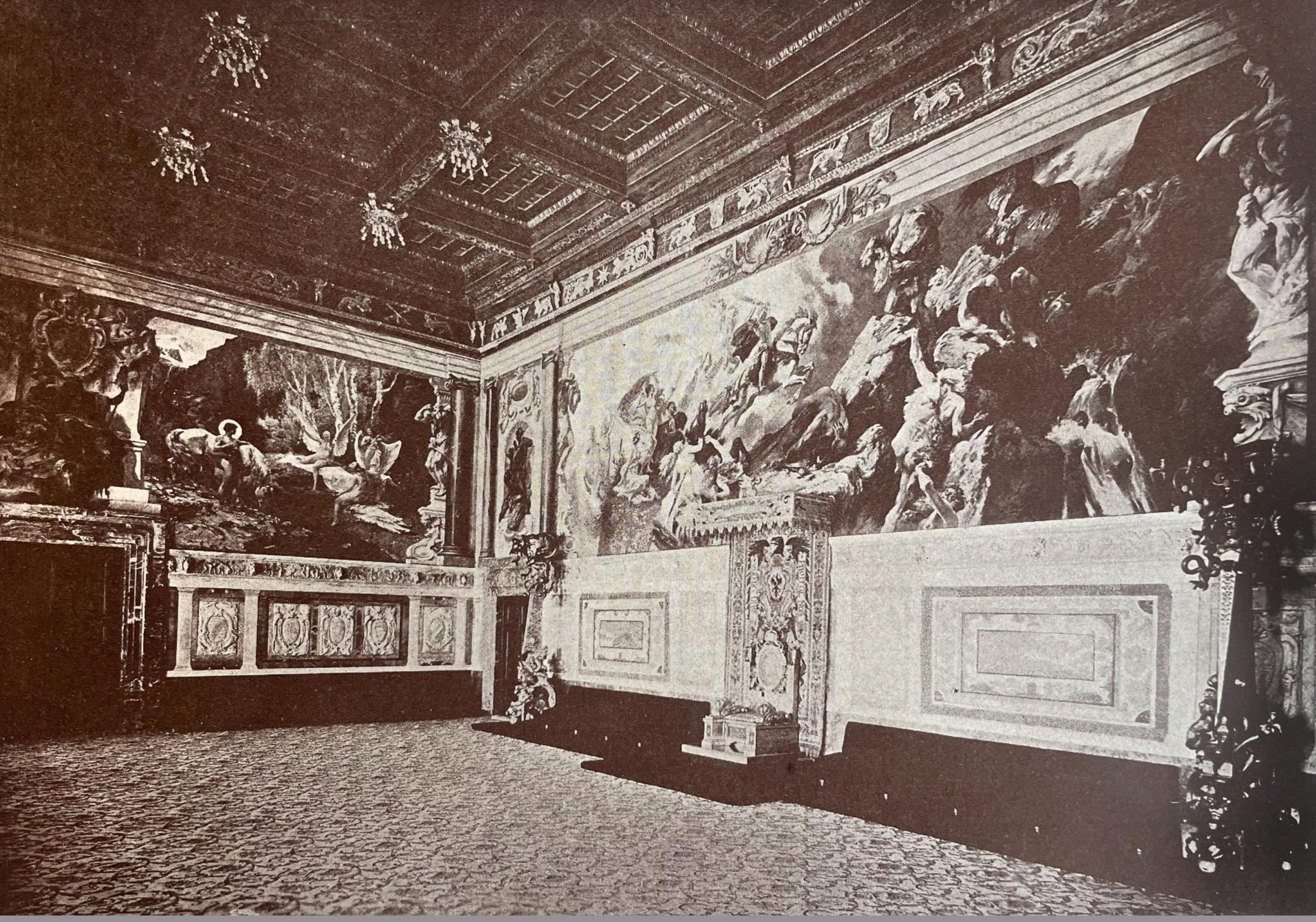
The throne room of Palazzo Caffarelli, Rome, showing the murals by Hermann Prell (1854-1922)
Prell was one of the most sought-after artists for large murals such as these in the late 19th and early 20th centuries. His mythological motifs were particularly popular in the Wilhelmine Empire. For the murals in the Palazzo Caffarelli, Prell decided to use the seasons as his inspiration, integrated with various characters and motifs from Norse mythology taken from the Medieval text, The Edda. Prell, born in Leipzig in 1854, initially studied in Dresden: ‘the moods I felt at that time have been revived and finally expressed in the murals of the Palazzo Caffarelli after many years, albeit in completely different scenes’. Prell painted three murals for the throne room, each representing a season; Winter, Spring and Summer. Interestingly, there was no mural for Autumn. The lack of an Autumn mural may be because historically Germany did not separate Autumn and Winter as two separate seasons, leaving only three seasons a year. In 1918 at the end of the First World War, the Palazzo Cafarelli was confiscated from the Germans by the Italians and the murals were returned to Berlin. The throne room was then subsequently destroyed. Once returned to Berlin, the murals were kept in the cellars of the Foreign Ministry on Wilhelmstrasse along with other works also returned from the Palazzo, until a decision could be made as to where to display them in order to make them accessible to the wider public. Unfortunately, no decision was made, and the murals, still in the cellar, were destroyed in 1945.
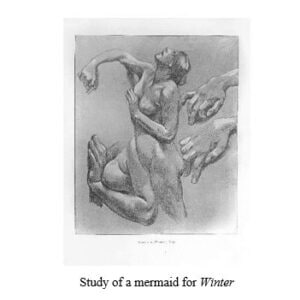
Study of a Mermaid for ‘Winter’
Louis Scherf (1870-1955) was an extremely successful porcelain painter who worked for the Thüringer Porzellanmalerei Lichte (in the town of Lichte in the state of Thuringia, central Germany). It is known that Scherf used the white porcelain of KPM as a picture carrier, preferring Berlin porcelain plaques (to Thuringian porcelain plaques). Louis and his brother Albert Scherf (1876–1953) were taught painting by Albert Schünze at the Lichte school of painting and modelling which had been established in Lichte in 1862 with the benefaction of the Prince of Sachsen-Meiningen. Louis Scherf’s work was awarded at various international exhibitions, including the gold medal at the 1904 World’s Fair in St. Louis. A collection of porcelain pictures by Albert and Louis Scherf, copied from celebrated Renaissance and 19th century paintings, were donated by the priest Giacomo Laguzzi to the Palazzo Pitti, Florence, and was exhibited after the war and subsequently transferred to the Galleria d’Arte Moderna.
The companion plaque of Spring is B76151.
Date
Circa 1900
Origin
German
Medium
Painted Porcelain
Signature
Signed 'Copiert nach Prof. H. Prell von L. Scherf, the reverse inscribed'Winter' nach Prof. H. Prell'.
Founded in Berlin in 1750 ‚‘KPM‚’ or ‘Koenigliche Porzellan-Manufaktur’ acquired its name and Royal patronage when the Prussian king, Frederick the Great, purchased the manufactory in 1760.
Its distinguished trademark from then on became the royal blue sceptre, which is stamped (painted prior to 1837) on every piece. All painted pieces produced by KPM are signed by the painter.
The complicated and exacting process of painting on porcelain became very popular in the mid to late nineteenth century. Drawing inspiration from old master portraits and genre scenes, artists were able to achieve incredible images embued with a luminous beauty through the translucent quality of the porcelain.
KPM porcelain represented the height of technical and artistic achievement during this period and large plaques particularly signed examples have become rare and highly sought after.
Private European Family since it was acquired at the time of manufacture.
Franz Hermann Meissner, Hermann Prells Wandgemälde im Thronsaale der Deutschen Botschaft zu Rom, Palazzo Caffarelli: ausgeführt im Auftrage seiner Majestät Kaiser Wilhelm II. 1899.
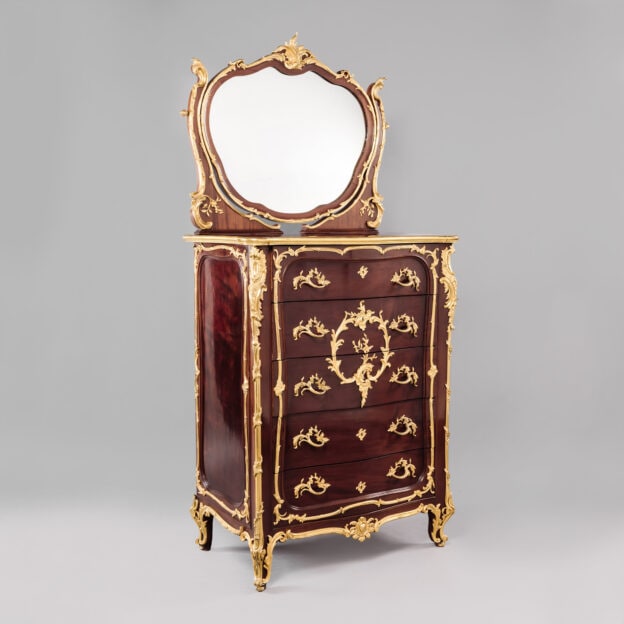




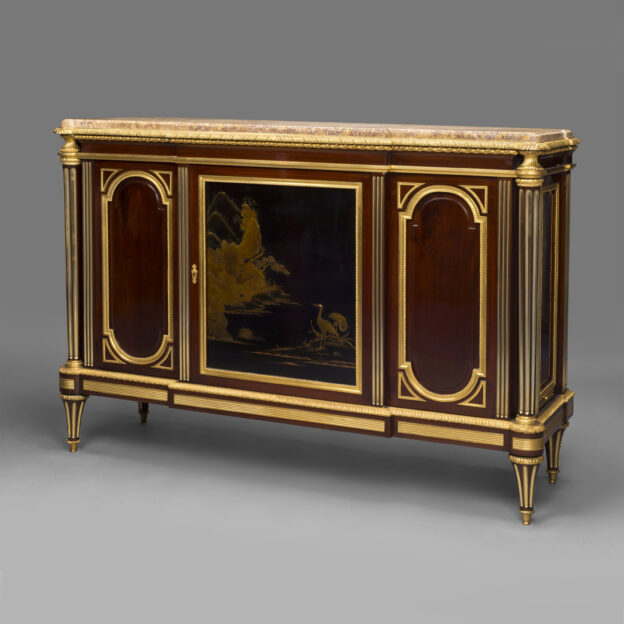
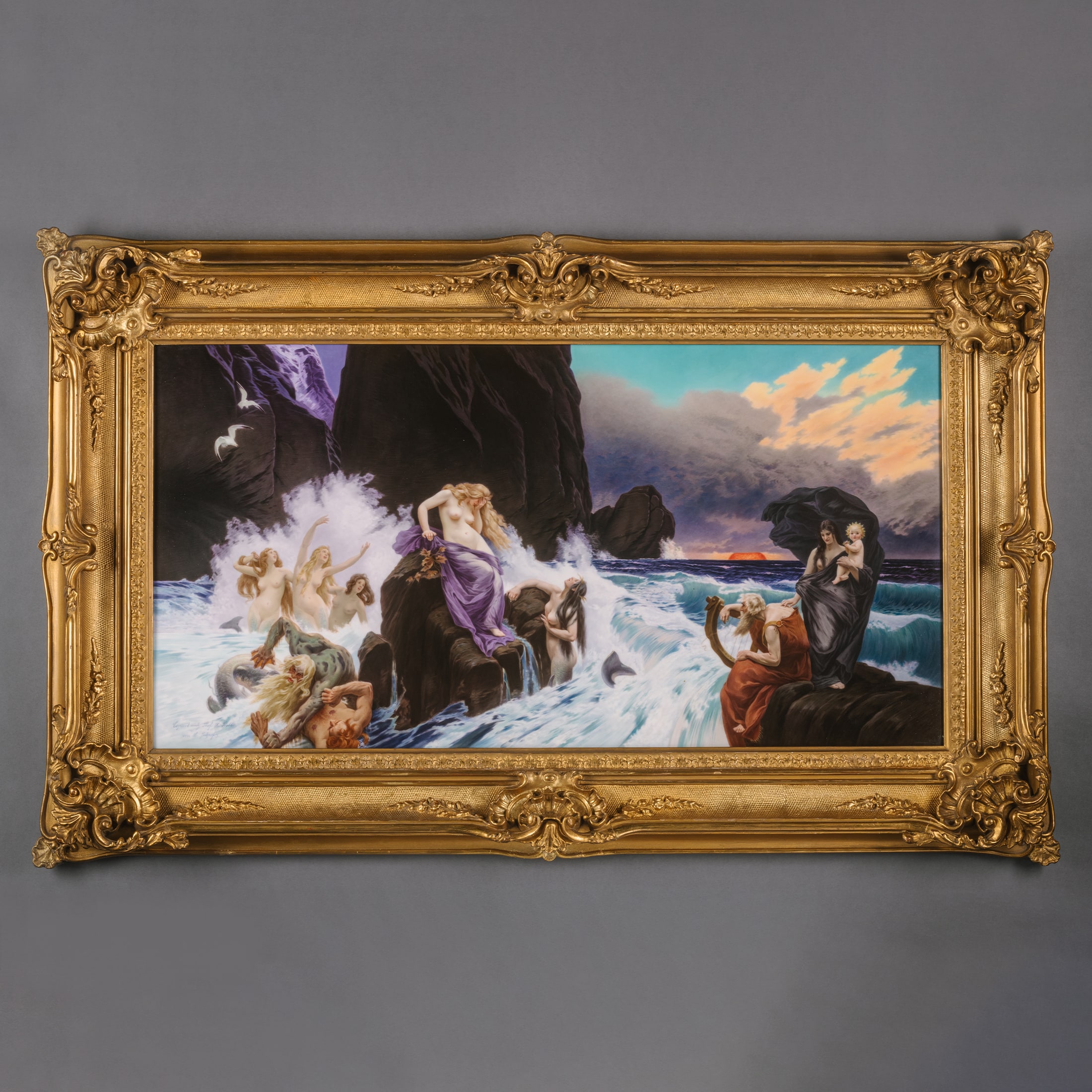


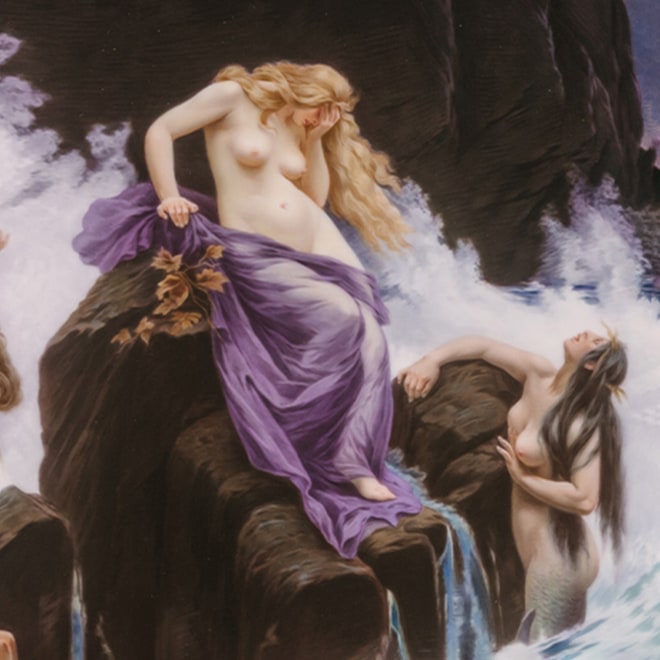
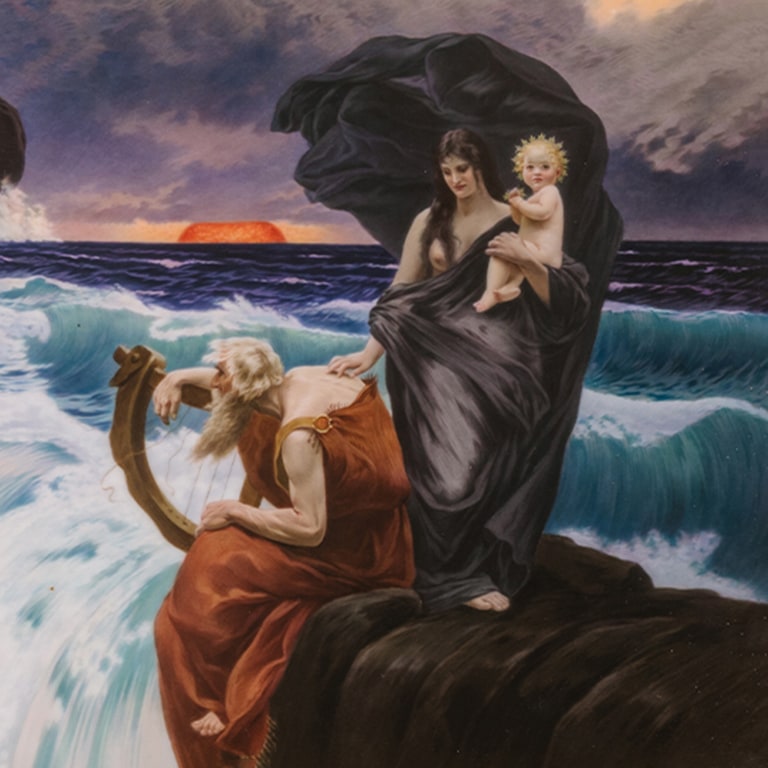
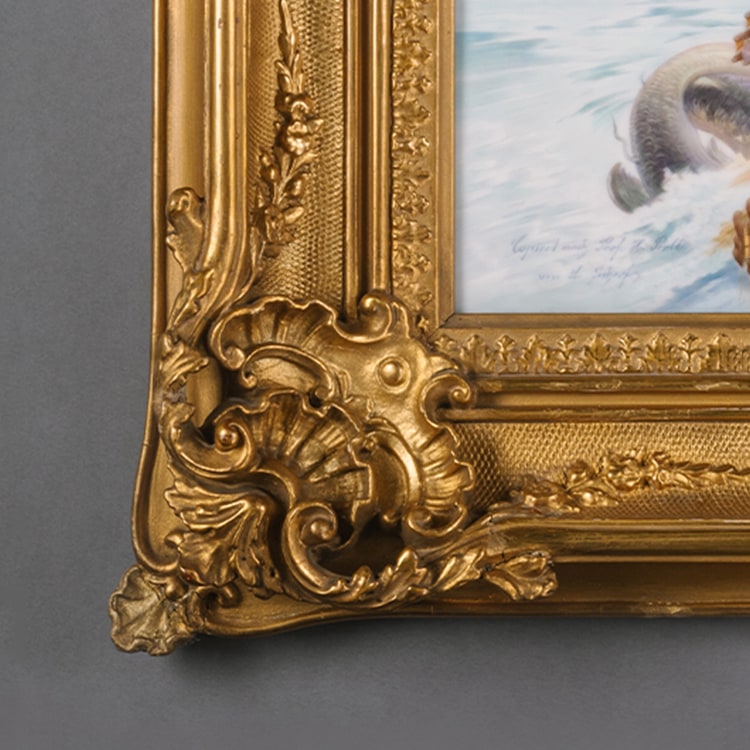

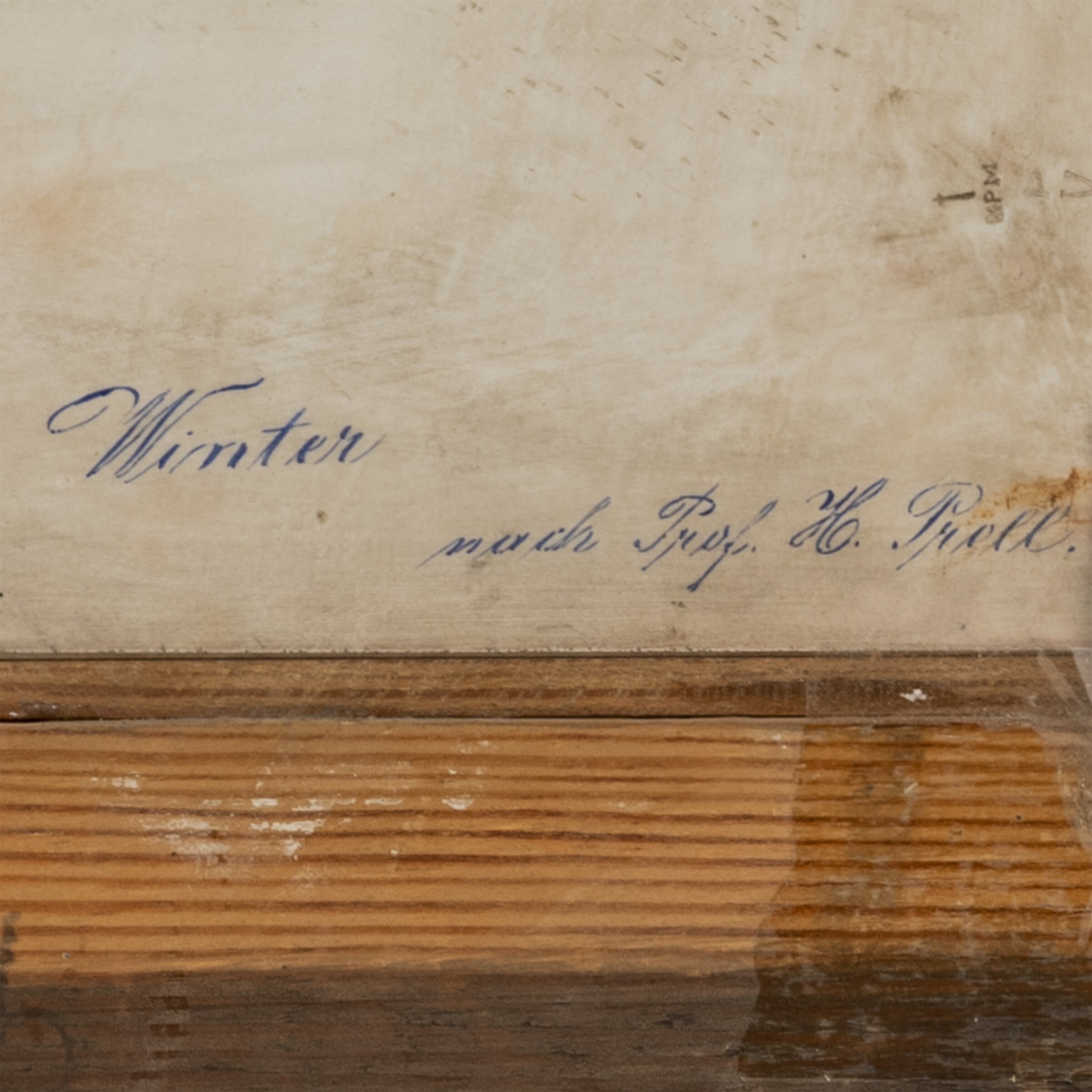

 Print
Print